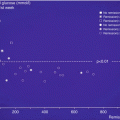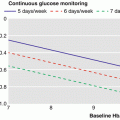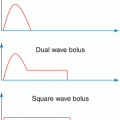Stimulate and perform innovative scientific research in children and adolescents with diabetes
Enhance the impact of scientific research by multicenter collaboration
Share and compare data from international centers of excellence
Increase the awareness of research in pediatric diabetes through scientific communication
Improve the understanding and quality of care in children and adolescents with diabetes
Between 1994 and 2009, five large international multicenter observational studies were performed by this collaboration of 26 pediatric diabetes centers from four continents. Four studies were cross-sectional, non-population based with a focus on center differences and the identification of potentially modifiable factors. As no major impact of insulin injection regimens on the metabolic control could be demonstrated in the first cross-sectional studies, a potential explanation for center differences was sought in the patient characteristics and treatment at disease onset. This led to the only longitudinal observational study performed by the study group in 1999–2000. In 2005 and 2009, two more cross-sectional studies investigated the persistence of center difference in specific age groups, including a comparison with the healthy background population.
5.2 Short Summary of the Hvidoere Studies
5.2.1 1995: The First Study [9, 10]
Compare outcome and share best practices were the key to this study.
2873 children between 1 and 18 years of age participated in this study. They were followed in 22 different pediatric centers in 18 countries. Most frequent insulin regimen was twice-daily injections (60 %). Numerous different insulin combinations were used without a clear difference in metabolic outcome. A lower average HbA1c (8.3 ± 1.3 %) was observed in the younger age group (1–<11 years) in comparison with the adolescents HbA1c (8.9 ± 1.8 %), despite an apparent intensification of insulin management. The study showed that the center differences in glycemic control were not depending on insulin regimen per se. Questions arose on how to intensify insulin management in children and adolescents and when to do so. Should the target group be better characterized? What other factors could be relevant for the outcome? What was the role of the psychosocial parameters on insulin regimen and vice versa? How would outcome impact on the perceived quality of life and how would quality of life influence outcome? To address some of these questions, a second study was planned.
5.2.2 1998: The Second Study [11–14]
The focus of the second study was the role of the quality of life and a possible association with metabolic outcome. 2101 adolescents participated from 21 centers and 17 countries. Quality of life was assessed by a previously developed diabetes quality of life questionnaire (DQOL) which was adapted for the study, measuring diabetes impact, worries, satisfaction with life, and health perception. For parents and health professionals, a newly constructed questionnaire was used to assess family burden. Clinical and demographic data were collected as well as the centrally measured HbA1c.
Gender differences were observed with more worries, less satisfaction, and poorer health perception in girls. Average HbA1c was slightly lower than in the adolescent group of the 1995 study (8.7 ± 1.7 %). More important was the finding that a good metabolic control was associated with fewer worries, lower impact of diabetes, greater satisfaction, and better health perception. In addition both parents and health professionals expressed less perceived burden among children and adolescents with excellent HbA1c levels compared to those with a poor control. This was observed as well in the health professional group. Parents and health professionals’ perception of burden decreased as well with the age of the adolescent. No association between adolescent and parent nor adolescent and health professional perceptions were found. No relationship was found between the scores for the four subscales of impact, worries, satisfaction, health perception, and insulin regimen, nor with hypoglycemic events. Although no cause to effect relationship can be established based on this observational study, the outcome suggests that quality of life measures should be included in normal care and should be audited at least yearly.
A subpopulation of the second study had as well participated in the first study (1995), allowing a comparison over time. Key message was the change in insulin injection regimen (an increase from 42 to 71 % of multiple injections) without a change in metabolic outcome, although one could argue that the expected age-related deterioration in HbA1c was not seen. Center differences persisted. This confirmed that comprehensive diabetes care could not rely on insulin regimen alone. This study also showed that centers with lower HbA1C levels also had a lower rate of hypoglycemic events.
5.2.3 2000: The Third Study [15–22]
This study was the only prospective longitudinal study of the group. The objective was to focus on the early course of the disease and investigate the contribution of age, ketoacidosis, autoantibodies, as well as initial treatment approach the first 12 months after diagnosis on the remission phase to better understand center differences.
Eighteen centers from 15 countries joined and 275 children less than 16 years at onset participated, including clinical and demographic characteristics and biomarkers. Autoantibodies, HLA, centrally determined HbA1c at several time points, and a centrally measured stimulated C-peptide, glucagon, proinsulin, GLP-1, and GIP were included. Residual beta-cell function and glycemic control could be predicted by objective factors, already present early on. Younger age, ketoacidosis at onset, and autoantibodies proved most relevant for the residual beta-cell function. Using the stimulated C-peptide values in combination with insulin dosage and metabolic control led to a new composite definition of remission, insulin dose-adjusted A1c (IDAA1c). Currently this marker can be used to document the remission period. When new intervention drugs are used, one may consider this measure as primary endpoint. Over the last 5 years, new biomarkers for the remission phase and metabolic outcome have been found. The careful phenotyping of the study cohort has led to the testing and further identification of these biomarkers.
5.2.4 2005: The Fourth Study [23–28]
The outcome of the first three studies had clearly demonstrated that more is needed to obtain a good metabolic control than only the number of insulin injections. Comprehensive care, aiming at the reduction of complications, should include education, diet, family interactions, culture, and psychosocial aspects. Objectives of the fourth study were to obtain information from the adolescents and the teams on more than insulin regimen and hypoglycemia only. A questionnaire was constructed for the adolescents, the parents, and healthcare professionals, but as well as for the diabetes teams. The questionnaire for the adolescents was partially based on a questionnaire used every 3–4 years in healthy school-aged children, offering the possibility to compare the study population with their peers (www.hbsc.org).
A number of changes in the insulin treatment had occurred and potentially changes were expected, within and between centers.
The study included 2093 adolescents from 21 centers. The most surprising was the still persisting center differences. Overall, HbA1c was slightly lower with a mean of 8.2 %, but significant differences between centers still persisted. No specific treatment regimen was best, but the premix insulin group showed poor metabolic control.
Universally, family interaction is vital, and when agreement between adolescent and parent exists on their respective responsibilities, the outcome is better.
Team harmony and clear statement by the team of their goals are associated with a better metabolic control.
Still ongoing is the comparison with the healthy peer. Food intake is different, but risk behavior and quality of life comparison are currently discussed.
Key message of this study is the importance of glycemic target setting by diabetes teams and harmony within both the team and within the family. These are modifiable factors and may have important consequences on outcome.
5.2.5 2009: The Fifth Study [29]
Considering the adolescents as potentially not the most compliant group and possibly the most resistant to the effect of treatment changes, a different age group, <11 years, was considered to reflect the team care better. The objective of the study was to investigate the metabolic control in relationship to insulin regimen and team approach. Eighteen centers participated with 1133 children <11 years of age. Overall HbA1c was 8.0 ± 1.0 % improving but far from achieving glycemic targets. Center differences persisted. Despite major changes in insulin regimens, only a small proportion of children (41 % toward 53 %) had a HbA1c value below 8 %. The best metabolic outcome was observed in the group with a free mix twice-daily insulin treatment (HbA1c 7.3 ± 0.5 %). However, this group had the highest frequency of hypoglycemic events, whereas the pump group had the lowest number of hypoglycemic episodes.
In general hypoglycemia did not occur often, which could create an artifact. Still more work is needed to optimize outcome as well in the <11 years.
5.3 Discussion
Observational studies in pediatric diabetes can play an important role. Although rarely evidence “A” outcome will be obtained through observational studies, they can improve our understanding and help in identifying potential modifiable risk factors. Initially the Hvidoere Study Group set out to identify and potentially change best practice and best treatment strategy based on the first study in over 18 centers worldwide. By using a central HbA1c measurement, the primary outcome measure was comparable and allowed comparison across centers.
Lack of a predominant insulin regimen effect or staffing impact requested more in depth analysis. The significant outcome differences between the centers persisted over time. Different universal factors were identified, not explaining the difference between the centers [13, 24].
Most important was the one key message coming up in every domain: the unanimity of focus, whether this concerns the teams or the families [25]. Harmonizing, working together, and agreeing upon responsibilities may help to improve outcome [30].
5.3.1 Insulin Regimen
Insulin regimen alone is not enough to guarantee a good outcome, although premix insulin is consistently associated with the worst outcome.
Multiple insulin regimens are used and in a French observational study, over 80 different regimens were identified [31]. Using the data of the Hvidoere Study Group, a revision of current terminology has been published, to clarify the treatment approach [28]. Dividing insulin treatment into three subgroups enables greater clarity when describing the treatment philosophy:
- 1.
Fixed insulin dosing combined with fixed eating/activity
- 2.
Food-based insulin treatment (dosing is adjusted to the food and the activity)
- 3.
Pump treatment adjusted to food and activity, along with a continuous basal insulin administration
Stay updated, free articles. Join our Telegram channel

Full access? Get Clinical Tree






